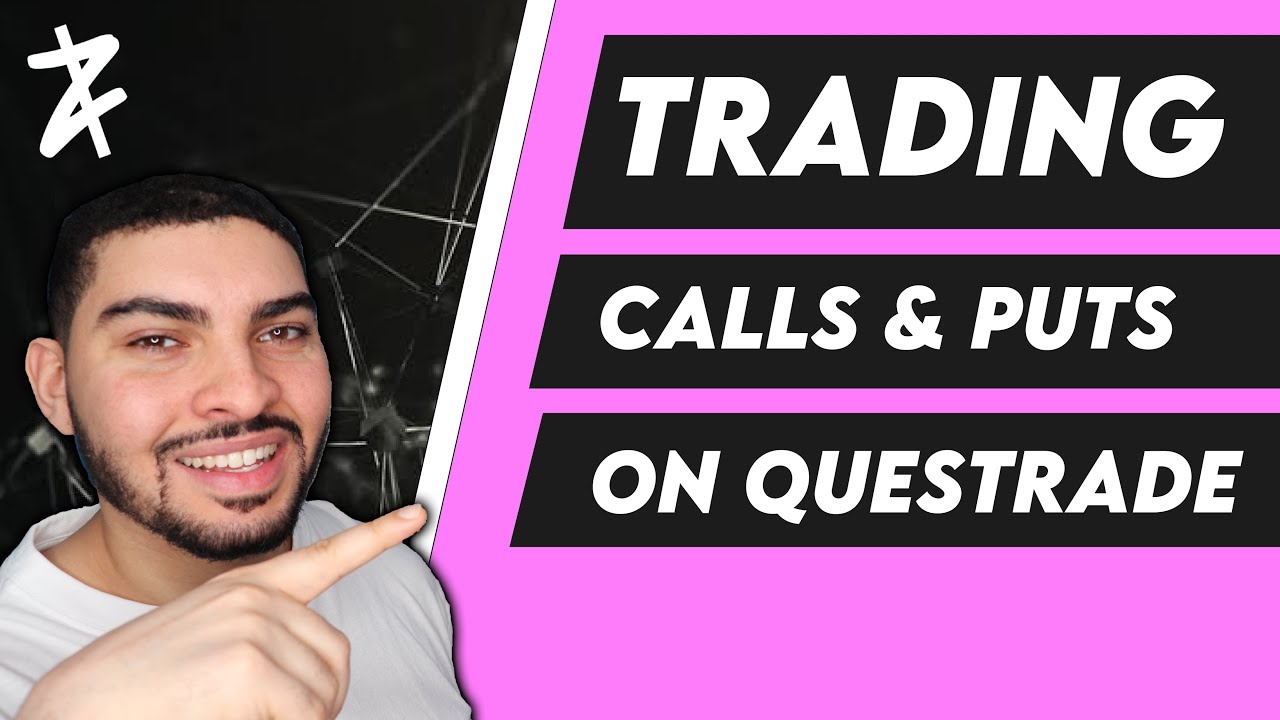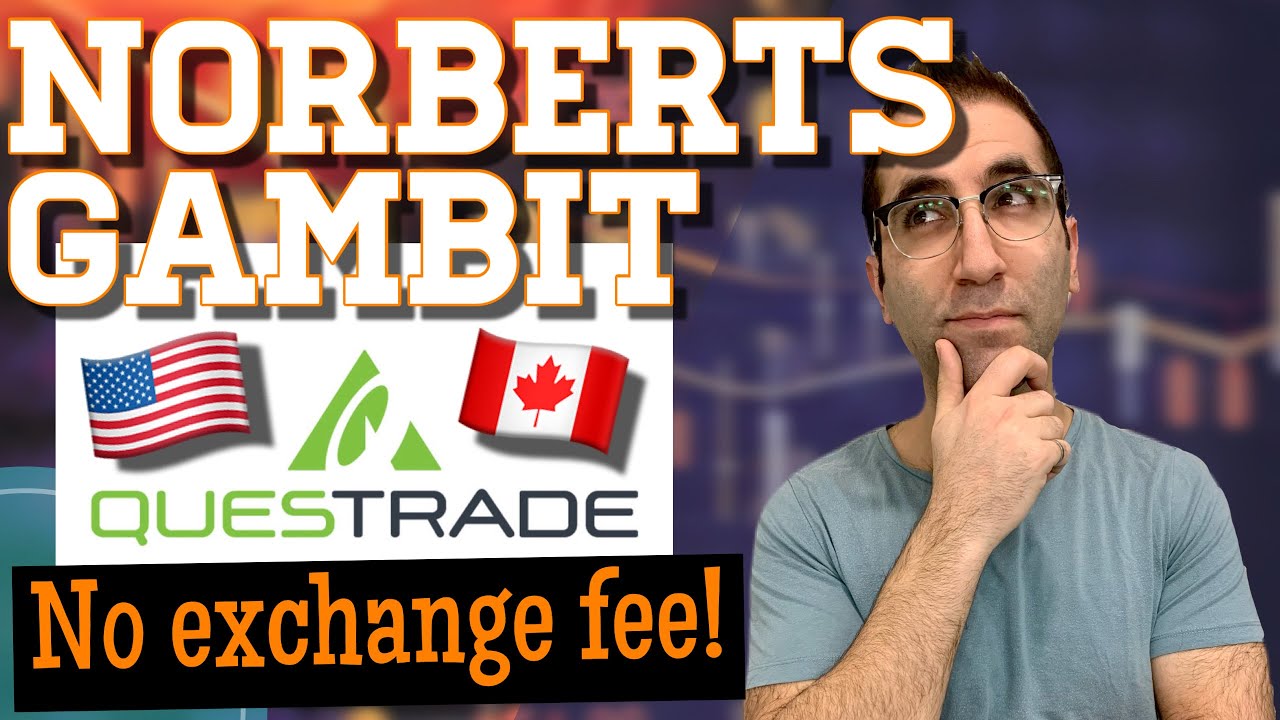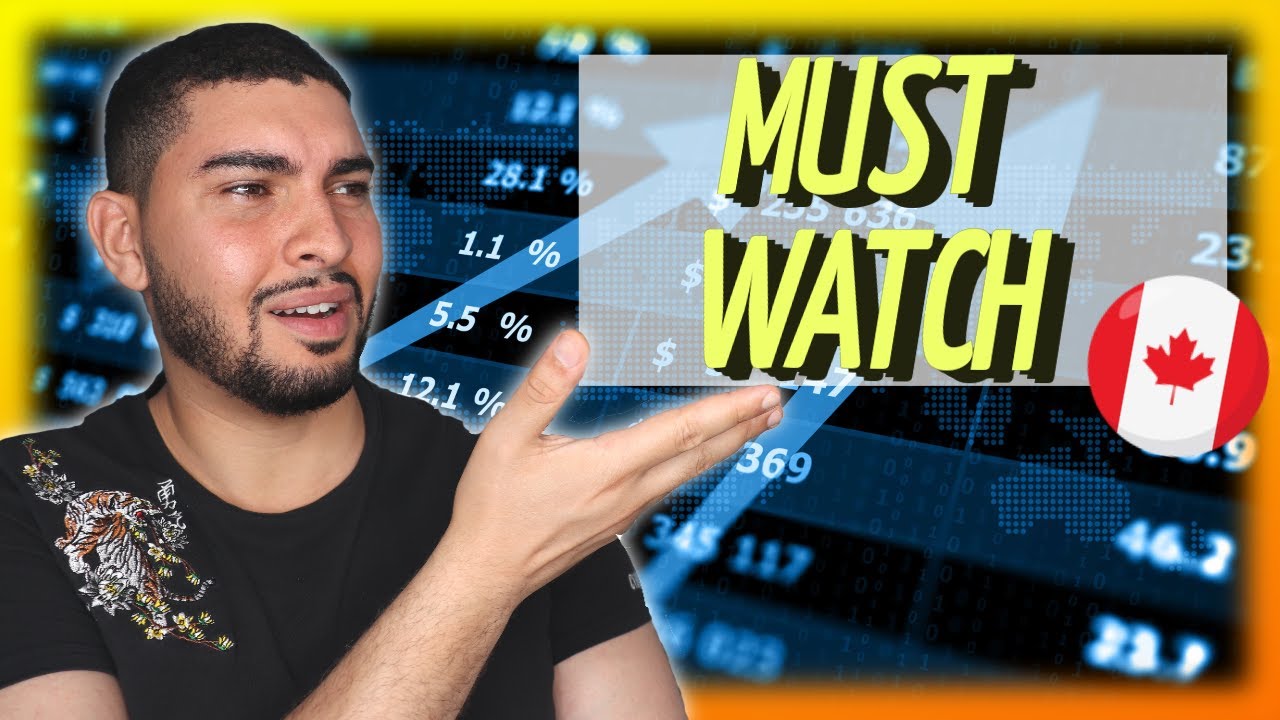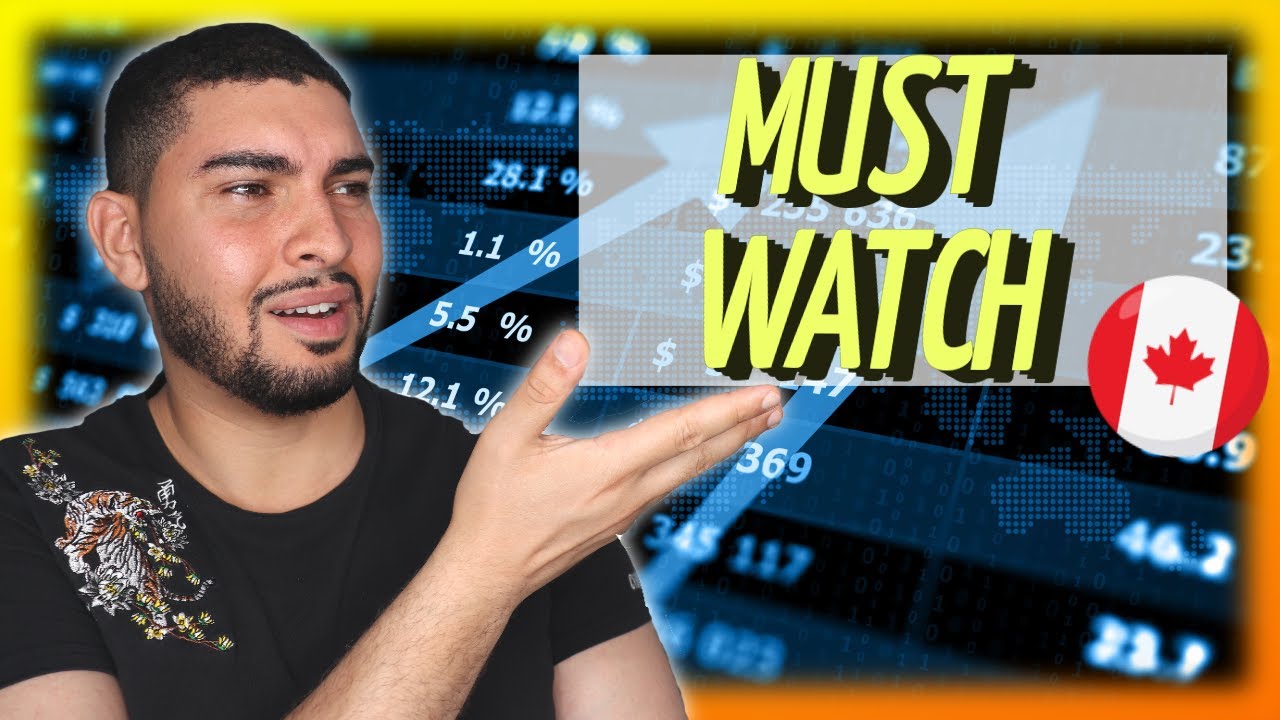Questrade currency conversion fees and how to avoid them: Ah, the age-old investor’s lament! Suddenly, your meticulously planned investment returns are nibbled away by hidden fees. But fear not, intrepid investor! This guide unveils the secrets of Questrade’s currency conversion charges, offering savvy strategies to minimize those sneaky costs and keep more of your hard-earned cash where it belongs – in your portfolio.
We’ll explore Questrade’s fee structure, compare it to competitors, and arm you with the knowledge to navigate the world of international investing with confidence (and a fatter wallet).
We’ll dissect Questrade’s fee structure, revealing the hidden variables that inflate your costs. Learn how factors like transaction size and market fluctuations impact your bottom line. We’ll also show you how to choose the best conversion method for your needs, whether you’re a seasoned trader or a newbie investor. Plus, discover alternative brokerages that might offer more wallet-friendly conversion rates, helping you keep more of your profits.
Questrade Currency Conversion Fees

Navigating the world of international investing can feel like traversing a jungle – full of hidden pitfalls and unexpected expenses. One such pitfall is the often-overlooked cost of currency conversion. Let’s shed some light on Questrade’s approach to these fees, so you can avoid unnecessary charges and keep more of your hard-earned money.
Questrade’s Currency Conversion Fee Structure
Questrade uses a markup on the prevailing market exchange rate when converting currencies. This means they don’t charge a separate, explicit fee, but instead adjust the exchange rate slightly to incorporate their profit margin. This markup varies depending on the currency pair involved and the size of the transaction. Think of it as a tiny, built-in surcharge cleverly disguised as a slightly less favorable exchange rate.
The larger your transaction, the smaller the percentage markup tends to be, offering a subtle reward for larger investments. This markup is applied to all currency conversions processed through Questrade, whether you’re buying foreign stocks, transferring funds internationally, or converting between your account’s currency holdings.
Factors Influencing Questrade’s Conversion Rate
Several factors contribute to the final conversion rate you receive. The most significant is the ever-shifting dance of the foreign exchange market. Currency values fluctuate constantly, influenced by global economic events, political stability (or instability!), and a host of other complex factors. Essentially, Questrade takes the current market rate and adds their markup. Transaction size also plays a role; larger transactions generally receive a more favorable rate due to economies of scale – essentially, they’re passing on some of their bulk-buying discounts to you.
The specific currency pair involved can also influence the markup, as some pairs are more volatile or have higher transaction costs associated with them.
Examples of Questrade Currency Conversion Fees, Questrade currency conversion fees and how to avoid them
Let’s illustrate with some concrete examples. Remember, these are examples only, and the actual rates will vary depending on the time of the transaction. Always check the current rate on Questrade’s platform before making a conversion.
| Currency Pair | Transaction Amount (CAD) | Fee Amount (CAD) | Total Cost (CAD) |
|---|---|---|---|
| USD/CAD | 1000 | 5 | 1005 (assuming a hypothetical exchange rate resulting in this total cost) |
| EUR/CAD | 5000 | 20 | 5020 (assuming a hypothetical exchange rate resulting in this total cost) |
| GBP/CAD | 2000 | 10 | 2010 (assuming a hypothetical exchange rate resulting in this total cost) |
| JPY/CAD | 10000 | 30 | 10030 (assuming a hypothetical exchange rate resulting in this total cost) |
Identifying and Comparing Questrade’s Conversion Methods

Navigating the world of international investing can feel like traversing a jungle of fees, but fear not, intrepid investor! While Questrade offers a straightforward approach to currency conversion, understanding their methods can save you a pretty penny (or, more accurately, a few precious loonies). Let’s dissect the options and see how they stack up. We’ll explore the nuances, so you can choose the conversion strategy that best suits your investing style and risk tolerance.
Questrade’s Currency Conversion Methods
Questrade primarily utilizes a single method for currency conversions: their own automated system. This system uses a real-time exchange rate, marked up by a percentage representing their conversion fee. There aren’t multiple methods to choose from like selecting a specific bank’s rate or a third-party provider. The simplicity is appealing, but understanding the implications of this single approach is key.
Advantages and Disadvantages of Questrade’s Conversion Method
The convenience of Questrade’s automated system is undeniable. It’s integrated directly into their trading platform, making conversions seamless and quick. No need to jump through hoops or use external services. However, this convenience comes at a cost – their markup on the exchange rate can be higher than what you might find through other channels. This means you might pay slightly more for the ease of use.
Think of it like ordering room service versus going out for a meal – room service is convenient, but often pricier.
Comparison of Questrade’s Conversion Method
| Feature | Questrade’s Automated Conversion |
|---|---|
| Speed | Instantaneous – conversion happens as part of the trade. |
| Cost | A percentage markup on the current exchange rate; varies depending on the currency pair. Generally higher than using a bank or other specialized currency exchange services. |
| Convenience | Extremely high; integrated directly into the trading platform, requiring minimal effort. |
| Transparency | The fee is clearly displayed before the transaction is confirmed, allowing you to assess the total cost upfront. |
Strategies to Minimize or Avoid Questrade Currency Conversion Fees

Let’s face it, currency conversion fees can feel like a sneaky goblin snatching your hard-earned profits. They’re the unwelcome guests at your investment party, silently munching on your returns. But fear not, intrepid investor! There are ways to outsmart these fee-hungry fiends and keep more of your money where it belongs – in your account. This section Artikels practical strategies to minimize, or even completely avoid, those pesky Questrade currency conversion charges.
The key to conquering currency conversion fees lies in a combination of strategic planning and savvy execution. By understanding how these fees work and employing a few clever tactics, you can significantly reduce their impact on your investment journey. Think of it as a financial ninja training session – equipping you with the skills to navigate the treacherous terrain of international investing.
Holding Investments in the Base Currency of the Account
Holding your investments in the base currency of your Questrade account is the ultimate currency conversion fee avoidance strategy. If your account is in Canadian dollars (CAD), ideally, you should buy assets denominated in CAD. This eliminates the need for currency conversions altogether, thus sidestepping those pesky fees entirely. For example, if you’re investing in Canadian stocks or bonds, you’ll avoid any conversion fees.
This simple step can save you a significant amount over time, making it a truly worthwhile endeavor. The savings accumulate silently, but the impact is substantial. It’s like finding a hidden treasure chest in your investment portfolio – a pleasant surprise you didn’t even know you were looking for!
Timing Transactions to Minimize Fees
The fluctuating exchange rates can be your secret weapon in the fight against conversion fees. While you can’t predict the future with certainty, observing exchange rate trends can help you time your transactions to potentially reduce costs. Consider buying assets when the target currency is relatively weaker against your base currency. For instance, if you want to buy US stocks and the USD is trading lower against the CAD, it’s a potentially opportune moment to convert your CAD to USD and make your purchase.
Conversely, you might consider selling assets when the target currency is relatively stronger. This requires monitoring the market, but the potential savings can be considerable, especially for large transactions. Remember, this is not a foolproof method; exchange rates are volatile, but strategic timing can offer an advantage. Think of it as a financial dance, gracefully moving with the rhythm of the market to minimize your costs.
Dodging Questrade’s currency conversion fees is a game of strategy, much like predicting the next football goal! To avoid those sneaky charges, time your trades wisely. For a break from the financial field, check out the latest football news for a much-needed dose of excitement. Then, get back to conquering those Questrade fees – you’ve got this!
This requires careful monitoring of currency exchange rates and a degree of market understanding. It’s not about predicting the market’s every move, but rather about making informed decisions based on observed trends. It’s like being a savvy shopper – looking for sales and bargains in the currency market.
- Regularly monitor exchange rates: Stay informed about the fluctuations between your base currency and the currency of the assets you’re buying or selling. Many financial websites and apps provide real-time exchange rate information.
- Consider using a limit order: A limit order allows you to specify the exchange rate at which you are willing to buy or sell currency. This can help you avoid paying higher conversion fees if the exchange rate moves against you.
- Be patient: Don’t rush into a transaction just because you’re feeling pressured. Take your time to analyze the exchange rate trends and wait for a favorable moment to make your move.
Alternative Brokerage Options with Lower Currency Conversion Fees
Tired of Questrade’s currency conversion fees nibbling away at your investment returns? You’re not alone! Many investors are seeking greener pastures – or rather, cheaper pastures – when it comes to international trading. Let’s explore some brokerage alternatives that might tickle your fancy (and your wallet).Let’s delve into three brokerage firms that often boast more competitive currency conversion fees, offering a potentially more palatable experience for those who frequently trade in foreign currencies.
We’ll compare their fee structures to Questrade’s, highlighting the key differences and helping you make an informed decision.
Comparison of Brokerage Firms and Their Currency Conversion Fees
Below is a comparison of Questrade’s currency conversion fees against those of three alternative brokerages. Note that fees can change, so always check the brokerage’s website for the most up-to-date information. The information presented here is based on publicly available data at the time of writing and should be considered for informational purposes only. Always conduct your own thorough research before making any financial decisions.
| Brokerage Name | Fee Structure | Minimum Fee | Maximum Fee | Additional Charges |
|---|---|---|---|---|
| Questrade | Typically a percentage of the transaction amount, often with a minimum fee. Specifics vary depending on the currency pair and transaction size. | Varies | Varies | Potentially additional charges depending on the transaction type. |
| Interactive Brokers (IBKR) | Generally offers lower percentage-based fees, often with a tiered system based on trading volume. They also offer a currency conversion tool that often provides competitive exchange rates. | Varies, often lower than Questrade | Varies, often lower than Questrade | May have minimum account balance requirements. |
| Fidelity | Fidelity often uses a mid-market rate with a markup, meaning their fees are usually transparent and built directly into the exchange rate. The markup can vary depending on the currency pair. | Varies, often low or negligible | Varies, generally lower than Questrade for larger transactions | May have account minimums for certain services. |
| TD Ameritrade | Similar to Fidelity, TD Ameritrade typically uses a markup on the mid-market rate. Their fees are generally competitive, particularly for larger trades. | Varies, often low or negligible | Varies, generally lower than Questrade for larger transactions | May have minimum account requirements. |
Illustrative Scenarios
Let’s ditch the dry financial jargon and dive into some real-world examples of how Questrade’s currency conversion fees can sneak up on you. We’ll see how different investment strategies, and the size of your investments, can dramatically alter the final cost. Remember, even small fees can eat into your returns over time, so paying attention to these details is crucial.Understanding the impact of currency conversion fees requires considering both the amount converted and the fee structure.
A large single investment will incur a larger absolute fee, while multiple smaller investments may lead to a higher percentage fee due to the repeated conversions. The following scenarios illustrate this dynamic.
Large Single Investment vs. Multiple Smaller Investments
Imagine you’re planning to invest $10,000 CAD into a US-based ETF. Let’s assume Questrade’s conversion fee is 1.5% (a typical rate, but always check their current fees).
- Scenario 1: One Large Investment: You convert the entire $10,000 at once. The conversion fee is $10,000
– 0.015 = $150. Ouch! That’s $150 less invested in your ETF. - Scenario 2: Multiple Smaller Investments: You decide to invest in four $2,500 installments. Each conversion incurs a fee of $2,500
– 0.015 = $37.50. Over four installments, your total fee is 4
– $37.50 = $150. While the total fee remains the same, the psychological impact of seeing smaller individual fees might make the overall cost feel less significant.
This seemingly minor difference in approach highlights the importance of planning your investments carefully to minimize these hidden costs.
Impact on Investment Growth
Let’s assume a 7% annual return on your ETF investment. The difference between the two scenarios above, while seemingly small initially, can compound over time.
- Scenario 1 (Single Investment): Your initial investment is $9,850 ($10,000 – $150). After 5 years, at a 7% annual return, this would grow to approximately $13,978. The fees are a fixed loss, not affecting the growth rate.
- Scenario 2 (Multiple Investments): The same principle applies. The total investment after fees is still $9,850. The final value after 5 years would also be approximately $13,978.
While the final investment value is the same, the key takeaway is that the initial $150 fee represents a larger percentage of your initial investment than the same $150 fee spread across multiple investments. This makes the impact of the fees feel larger when investing in a lump sum.
Currency Fluctuation and Conversion Fees
This example illustrates a scenario where currency fluctuations exacerbate the impact of conversion fees. Imagine you’re investing $10,000 CAD in a US stock, and the CAD/USD exchange rate is 1.35 (1 CAD = 1.35 USD).
- Scenario 1: Favorable Exchange Rate: You convert your CAD to USD at a rate of 1.35. Your USD investment is $13,500. A 1.5% conversion fee would be $202.50, resulting in a net investment of $13,297.50.
- Scenario 2: Unfavorable Exchange Rate: The CAD/USD rate drops to 1.30 before you can invest. Your USD investment is now $13,000. The 1.5% fee becomes $195, leaving a net investment of $12,805. The combined effect of a weaker exchange rate and conversion fees significantly reduces your purchasing power.
This emphasizes the importance of monitoring exchange rates and timing your investments strategically to mitigate the combined impact of both currency fluctuations and conversion fees.
Understanding Questrade’s Fee Transparency and Disclosure: Questrade Currency Conversion Fees And How To Avoid Them
Navigating the world of brokerage fees can feel like deciphering an ancient scroll written in Klingon. Thankfully, Questrade, while not exactly known for its flamboyant marketing, strives for a degree of transparency when it comes to its currency conversion fees. Let’s unravel the mystery and see how clear (or cloudy) their disclosure actually is.Questrade’s currency conversion fees are primarily disclosed through their website and account statements.
While they don’t exactly shout it from the rooftops (or, you know, their homepage banner), the information is available if you know where to look. Think of it as a hidden treasure – the reward is avoiding hefty unexpected charges, making the quest worthwhile.
Location of Fee Information on Questrade’s Website
Finding the precise details on Questrade’s website requires a bit of detective work. It’s not prominently featured, but it’s generally nestled within their “Pricing & Fees” section, often under subheadings related to foreign exchange or international trading. You might need to do some clicking around – think of it as a digital scavenger hunt, but with less chocolate and more financial responsibility.
They usually provide a table outlining their conversion rates and the associated fees, often expressed as a percentage markup over the prevailing mid-market rate. Additionally, their account statements clearly detail any currency conversion fees incurred during a trading period.
Clarity and Ease of Understanding Questrade’s Fee Disclosure
The clarity of Questrade’s fee disclosure is… a work in progress. While the information is technically available, it’s not always presented in the most user-friendly format. The language used can be quite technical, potentially leaving less financially savvy investors scratching their heads. Imagine trying to understand a complex equation without a calculator – it’s doable, but it definitely adds to the challenge.
A visual representation of the fee structure, perhaps a simple chart or infographic, could significantly improve understanding. However, the information is present, and with a little effort, it’s decipherable. They could certainly improve the presentation, making it less akin to a tax code and more akin to a friendly, helpful guide.
Summary
So, there you have it – a comprehensive guide to conquering Questrade’s currency conversion fees! By understanding the mechanics of these fees, employing smart strategies, and perhaps even considering alternative brokerage options, you can significantly reduce – or even eliminate – these hidden costs. Remember, every penny saved is a penny earned, and in the world of investing, those pennies can add up to a significant difference over time.
Now go forth and conquer those currency conversions!
